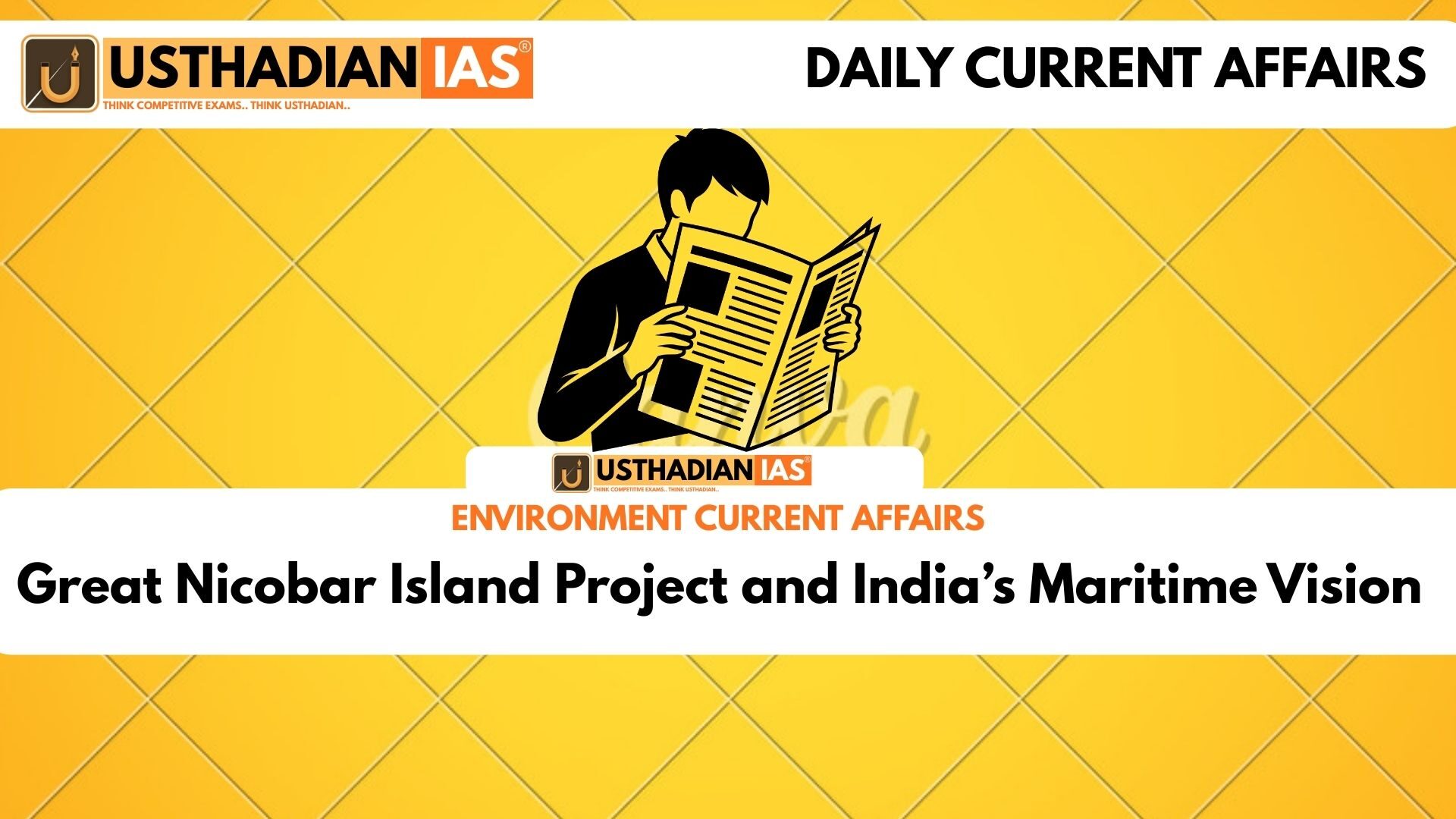Project Overview
Great Nicobar Island Project and India’s Maritime Vision: The Great Nicobar Island Project is one of India’s most ambitious infrastructure initiatives, aimed at transforming the country’s southernmost island into a hub of trade, security, and connectivity. Envisioned as part of a long-term 30-year development plan, the project will cost around ₹72,000 crore.
The main components include an International Container Transshipment Terminal (ICTT) with a handling capacity of 14.2 million TEUs, a Greenfield International Airport for both civilian and defence use, a 450 MVA gas and solar-based power plant, and a modern township spread across 16,610 hectares.
Static GK fact: Indira Point on Great Nicobar is the southernmost tip of India, located less than 150 km from Indonesia.
Strategic Significance
Great Nicobar holds immense strategic weight in the Indian Ocean Region (IOR). Its location near the Malacca Strait, through which nearly one-third of global trade passes, gives India a natural maritime advantage.
The project strengthens India’s ability to counter China’s naval expansion, secure maritime routes, and act against illegal poaching and transnational crimes. By developing air and sea connectivity, the island positions India as a reliable partner in the Indo-Pacific security framework.
Static GK Tip: The Malacca Strait is the shortest sea route between the Indian and Pacific Oceans, making it one of the busiest shipping lanes in the world.
Ecological and Tribal Concerns
The development plan has sparked debates due to its potential impact on fragile ecosystems and indigenous communities. Around 13,075 hectares of forest land will be diverted, leading to the loss of nearly 9.64 lakh trees. The island is a nesting ground for the Leatherback sea turtle, an endangered species.
The indigenous Shompen tribe (approx. 237 people) and Nicobarese (approx. 1,094 people) live in a 751 sq km tribal reserve, of which 84 sq km will be denotified for development. Experts have also highlighted the island’s seismic vulnerability, as it was devastated during the 2004 Indian Ocean tsunami triggered by a 9.2 magnitude earthquake.
Balancing Development and Ecology
Union Environment Minister Bhupender Yadav has emphasized that the project includes safeguards to balance economic growth with ecological protection. Measures include earthquake-resistant construction under the National Building Code, adoption of renewable solar energy, creation of conservation zones, and preservation of tribal welfare.
This approach reflects India’s principle of ensuring that economy and ecology complement each other, aligning with the broader goal of Viksit Bharat by 2047.
Static GK fact: The Nicobar Islands are part of the Andaman and Nicobar group, a Union Territory of India since 1956.
Static Usthadian Current Affairs Table
Great Nicobar Island Project and India’s Maritime Vision:
| Topic | Detail |
| Project | Great Nicobar Island Project |
| Location | Great Nicobar, Andaman and Nicobar Islands |
| Project Value | ₹72,000 crore |
| Duration | 30 years (phased development) |
| Key Infrastructure | ICTT, Greenfield Airport, Power Plant, Township |
| Strategic Advantage | Close to Malacca Strait, Indo-Pacific hub |
| Major Concern | Forest diversion, biodiversity loss, tribal impact |
| Indigenous Tribes | Shompen (237) and Nicobarese (1,094) |
| Seismic Risk | Zone impacted by 2004 tsunami (9.2 magnitude) |
| Highlighted By | PM Narendra Modi, 12 Sept 2025 |








